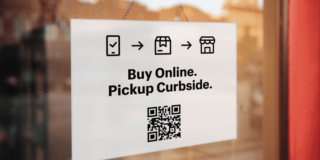Consumer shopping behaviors have changed dramatically since the onset of the coronavirus pandemic, with ecommerce retailers seeing unprecedented growth in traffic and sales.
While retail stores are slowly beginning to reopen, many consumers have made online shopping their new default. Some 71% of U.S. adults plan to do more than half of their holiday shopping digitally this year.
Keep reading
In this CXL Institute study, we explore how general perceptions of a website are affected by the use of a “human authority image” (a picture of a company’s founder, or maybe just a photo of a person presumably representing the company) on an agency website homepage.
Keep reading
This study, conducted through CXL Institute, is the first of a two-part series exploring security perceptions on checkout pages. We compare the effectiveness of six popular trust badges on an actual checkout page.
Keep reading
When internet users share private information, they want to feel safe doing so.
One of the most popular ways to convey security on a website is by using trust badges (also referred to as “trust logos” or “site seals”).
This study, conducted by CXL Institute, expands on existing research from Baymard Institute’s research in 2013 to better understand the popularity and efficacy of various trust badges online.
Keep reading
When shopping online, you can’t hold the product, test it out, or talk to a salesperson about how different brands compare to one another. For these scenarios, social proof is frequently used to guide shoppers towards the best product choice.
Which brings us to the real question: Which social proof techniques are most effective? Are some of them totally ineffective?
This study from CXL Institute explores how different forms of social proof are perceived (with eye-tracking), and then how they are recalled (with post-task survey questions).
Keep reading
Product page copy is something that, generally, gets ignored.
Not just the content, but how it is formatted.
In this 3 part study from CXL Institute on eCommerce product pages (part 1 here, and part 2 here), we wanted to explore how elements of a product page affect users’ visual and value perceptions.
This experiment looks at how users view a page and read product text descriptions when the text format changes.
Keep reading
What makes a good product page?
Well, there are tons of elements that come together to make a successful product page. These include price, product image, product copy, layout, etc.
One element in particular, product image size, seems to affect the value perception of the product. In this study from CXL Institute (part one of three of a full eCommerce product page study, the others to come soon), we look at product page design, and in particular, how you can increase the value perception of your particular product.
Keep reading


![How Do Famous Founder Photos Affect Website Credibility? [Original Research]](https://cxl.com/wp-content/uploads/2016/07/Screen-Shot-2016-07-15-at-12.26.55-PM-1-320x160.jpg)
![Checkout Optimization: How Do Trust Seals Affect Security Perception? [Original Research]](https://cxl.com/wp-content/uploads/2016/06/brooklinen-norton-jpg_seenmap-320x160.jpg)
![Which Site Seals Create The Most Trust? [Original Research]](https://cxl.com/wp-content/uploads/2016/06/trust_seals-320x160.jpg)
![Which Types of Social Proof Work Best? [Original Research]](https://cxl.com/wp-content/uploads/2016/04/socialproofpic-1-320x160.jpg)
![How Does Product Copy Format Affect User Engagement? [Original Research]](https://cxl.com/wp-content/uploads/2016/03/study3_aoi_figure-320x160.jpg)
![How Product Image Size Impacts Value Perception [Original Research]](https://cxl.com/wp-content/uploads/2016/03/shirt2-1-320x160.jpg)